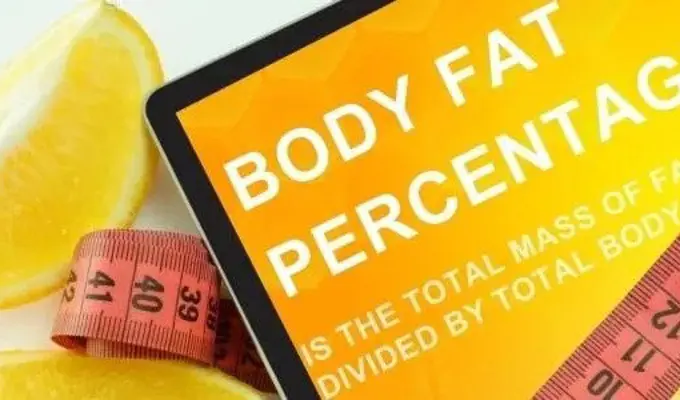TDEE CALCULATOR: YOUR ULTIMATE GUIDE TO TOTAL DAILY ENERGY EXPENDITURE
Whether you're looking to lose weight, gain muscle, or maintain your current physique, understanding your Total Daily Energy Expenditure (TDEE) is crucial.
Today, you’ll get to know the world of TDEE and introduce you to the powerful tool known as the TDEE calculator.
In order to burn fat, you need to eat fewer calories than your TDEE dictates; in order to gain weight, you need to eat more calories than your TDEE dictates; in order to maintain your current weight, you need to eat exactly the amount of calories that your TDEE dictates. It really is this simple, at least as a baseline in how to manipulate your weight.
This is why, when working out your daily calorie count and macronutrient breakdown, TDEE is vital.
SIGN UP FOR YOUR FREE DAY PASS TODAY!
What is TDEE?
TDEE stands for Total Daily Energy Expenditure, and it represents the total number of calories your body burns in a day. This calculation takes into account various factors, including your Basal Metabolic Rate (BMR), physical activity, and more. Your TDEE is essentially the number of calories you need to maintain your current weight, and it serves as the foundation for reaching your fitness goals, whether it's losing weight, gaining muscle, or simply staying healthy.
The Components of TDEE
To better understand TDEE, let's break down its key components:
1. Basal Metabolic Rate (BMR)
Your BMR is the number of calories your body needs to perform essential functions like breathing, circulation, and cell production while at rest. It's as if you were lying in bed all day without any physical activity. BMR is influenced by factors such as age, gender, weight, and height.
2. Physical Activity
This component accounts for the calories burned during all types of physical activity, from walking and working out to household chores. Your activity level can be classified into various categories, ranging from sedentary (little to no exercise) to very active (intense exercise or a physically demanding job).
3. Thermic Effect of Food (TEF)
TEF represents the energy expenditure required for digesting, absorbing, and metabolizing the food you eat. Different macronutrients (carbohydrates, proteins, and fats) have varying thermic effects.
4. Non-Exercise Activity Thermogenesis (NEAT)
NEAT encompasses all the calories burned through activities that are not structured exercises, such as fidgeting, standing, or even typing on your computer.
How to Calculate Your TDEE
Calculating your TDEE may sound complex, but it's quite manageable, thanks to the TDEE calculator. Here's a step-by-step guide to finding your TDEE:
Step 1: Calculate Your BMR
Your BMR can be calculated using the Mifflin-St Jeor Equation:
For Men: BMR = (10 * weight in kg) + (6.25 * height in cm) - (5 * age in years) + 5
For Women: BMR = (10 * weight in kg) + (6.25 * height in cm) - (5 * age in years) - 161
Step 2: Determine Your Activity Level
As mentioned earlier, your activity level plays a significant role in your TDEE. Use the following categories to classify your activity level:
Sedentary (little or no exercise)
Lightly active (light exercise or sports 1-3 days a week)
Moderately active (moderate exercise or sports 3-5 days a week)
Very active (hard exercise or sports 6-7 days a week)
Super active (very hard exercise, physical job, or training twice a day)
Step 3: Apply Activity Multiplier
Multiply your BMR by the activity level multiplier that corresponds to your activity level:
Sedentary: BMR * 1.2
Lightly active: BMR * 1.375
Moderately active: BMR * 1.55
Very active: BMR * 1.725
Super active: BMR * 1.9
Step 4: Account for Goals
TDEE calculator to lose weight: Subtract 10-20% from your TDEE.
TDEE calculator to maintain weight: Keep your TDEE as is.
TDEE calculator to gain weight (muscle): Add 10-20% to your TDEE.
Step 5: Calculate Total Daily Energy Expenditure (TDEE)
Now, you have your TDEE, which represents the number of calories you need to consume daily to maintain your current weight. If you have specific weight loss or muscle gain goals, adjust your daily caloric intake accordingly.
Why Calculate Your TDEE?
Understanding your TDEE is a game-changer on your fitness journey. Here are some compelling reasons to calculate your TDEE:
1. Goal Setting
Whether your fitness goals involve losing weight, gaining muscle, or simply maintaining your current physique, knowing your TDEE is the first step to setting realistic and achievable goals.
2. Calorie Control
With knowledge of your TDEE, you can tailor your daily calorie intake to align with your goals. For example, if you want to lose weight, you can create a calorie deficit by consuming fewer calories than your TDEE.
3. Tracking Progress
Monitoring your TDEE and adjusting your caloric intake accordingly allows you to track your progress more accurately. This helps you avoid plateaus and make necessary adjustments.
4. Macros Management
Understanding your TDEE also helps you determine the ideal macronutrient ratios for your goals. You can adjust your protein, carbohydrate, and fat intake to optimize your fitness journey.
Should I Eat My TDEE to Lose Weight?
The short answer is no. To shed those unwanted pounds, you need to create a calorie deficit, which means consuming fewer calories than your TDEE calculator to lose weight. Here's why:
Calorie Deficit Explained
A calorie deficit occurs when you burn more calories than you consume. This forces your body to tap into its energy reserves, primarily stored as fat, to meet its energy needs. Over time, this deficit leads to weight loss.
Your TDEE represents the number of calories required to maintain your current weight. To lose weight, you typically aim for a calorie intake that's 10-20% lower than your TDEE. This ensures a gradual and sustainable rate of weight loss, generally recommended at about 0.5 to 1 kilogram (1 to 2 pounds) per week.
Eating at your TDEE may help you maintain your current weight, but it won't result in significant weight loss. A calorie deficit is the key to shedding those extra pounds.
How Accurate is TDEE Estimation?
TDEE estimation, while a valuable tool, provides a rough estimate of your daily calorie needs. It's important to understand that individual variations can affect the accuracy of this estimate. Here are some factors to consider:
1. Metabolism
Metabolism varies from person to person due to genetics, hormones, and muscle mass. Some individuals naturally have a faster metabolism and burn more calories, while others have a slower metabolism.
2. Activity Level
Your reported activity level plays a significant role in TDEE calculation. If you overestimate your activity level, your TDEE estimate may be too high, leading to slower weight loss or even maintenance.
3. Lifestyle Changes
As you progress on your weight loss journey, your body composition and activity levels may change. This can affect your actual calorie needs, making it essential to periodically reassess your TDEE.
4. Health Conditions
Certain medical conditions, medications, and hormonal imbalances can impact your metabolism and calorie requirements. It's always advisable to consult a healthcare professional if you suspect such factors are at play.
While TDEE estimation provides a useful starting point, it's essential to be flexible and monitor your progress. If you find that your weight loss is slower or faster than expected, consider adjusting your calorie intake accordingly.
How Many Calories Should I Eat in a Day?
The number of calories you should consume daily to lose weight depends on several factors, including your TDEE and weight loss goals. Here's a simple guideline to help you determine your daily calorie intake:
Calculate Your TDEE:
Use a reliable TDEE calculator -such as explained above- to find out how many calories you burn in a day, taking into account your BMR, activity level, age, gender, and other factors.
Create a Calorie Deficit:
To lose weight, aim to consume 10-20% fewer calories than your TDEE. For example, if your TDEE is 2,000 calories, you might aim for a daily intake of 1,600 to 1,800 calories.
Track Your Progress:
Keep a close eye on your weight changes and how your body responds to your calorie intake. Adjust your daily calories if needed to stay on track with your weight loss goals.
Prioritize Nutrition:
While reducing calories is essential for weight loss, make sure you're getting adequate nutrition. Focus on nutrient-dense foods that provide essential vitamins and minerals.
Stay Consistent:
Consistency is key to successful weight loss. Stick to your calorie goals, maintain a balanced diet, and stay active.
Setting SMART Goals For TDEE Calculator
As you step into the world of fitness with your newfound knowledge of TDEE and calorie management, it's important to set SMART goals: Specific, Measurable, Achievable, Relevant, and Time-bound.
SMART goals provide clarity and direction, making it easier to stay motivated and track your progress.
Specific: Clearly define what you want to achieve. For example, "I want to lose 10 kilograms of body fat" is more specific than simply saying, "I want to lose weight."
Measurable: Your goals should be quantifiable so that you can track your progress. In our example, losing 10 kilograms is a measurable goal because you can track your weight changes.
Achievable: Ensure that your goals are realistic and attainable. Losing 10 kilograms over a few months is generally achievable, whereas aiming to lose 50 kilograms in the same time frame might not be.
Relevant: Make sure your goals align with your overall fitness aspirations. If you're primarily interested in building muscle, a weight loss goal may not be as relevant.
Time-bound: Set a deadline for achieving your goals. This adds urgency and helps you stay focused. For instance, you might aim to lose 10 kilograms within six months.
The Bottom Line
Use the TDEE calculator to establish a solid foundation for your nutrition plan, and complement it with SMART goals, regular progress tracking, and a balanced macronutrient intake. Combine these elements with consistent physical activity, proper hydration, and adequate rest, and you'll be well on your way to achieving your desired fitness outcomes.
At Gymnation, we're here to support you on your fitness journey. Our state-of-the-art facilities and expert trainers are ready to assist you in reaching your goals.
Whether you're aiming to shed those extra pounds, build lean muscle, or simply maintain a healthy lifestyle, Gymnation is your partner for success.
FAQs
1- What is the most accurate TDEE calculator?
There isn't a single "most accurate" TDEE calculator as accuracy can vary depending on the method used and the information you input. Commonly used formulas like the Mifflin-St Jeor Equation and the Harris-Benedict Equation are reliable for estimating TDEE. However, personalized accuracy may require fine-tuning based on your unique response to calorie intake and expenditure.
2- What is the best TDEE calculator for weight loss?
The best TDEE calculator for weight loss is one that takes into account your activity level, age, gender, and other relevant factors. Online TDEE calculators can provide a good starting point. However, it's crucial to monitor your progress and adjust your calorie intake as needed for effective and sustainable weight loss.
3- How do I manually calculate my TDEE?
You can manually calculate your TDEE by first determining your Basal Metabolic Rate (BMR) using formulas like the Mifflin-St Jeor Equation or Harris-Benedict Equation. Then, multiply your BMR by an activity level multiplier based on your daily physical activity. The resulting value represents your estimated TDEE.
4- How do you use a TDEE calculator?
To use a TDEE calculator, you typically input information such as your age, gender, weight, height, and activity level. The calculator then estimates your Total Daily Energy Expenditure (TDEE). To lose weight, aim for a calorie intake lower than your TDEE while monitoring your progress and adjusting as needed.
5- Will I lose weight if I eat below TDEE?
Yes, eating below your TDEE creates a calorie deficit, which is essential for weight loss. However, it's important to maintain a healthy calorie deficit of 10-20% below your TDEE to ensure sustainable and healthy weight loss.
6- Should I use BMR or TDEE to lose weight?
TDEE is typically used for weight loss because it accounts for your activity level, providing a more accurate estimate of your daily calorie needs. BMR, on the other hand, represents your resting metabolic rate and doesn't consider your activity level.
7- How to lose weight based on TDEE?
To lose weight based on your TDEE, calculate your TDEE, create a calorie deficit (consume fewer calories than your TDEE), prioritize nutrient-dense foods, maintain a balanced diet, and engage in regular physical activity. Consistency and patience are key to successful weight loss.
8- Why is TDEE important for weight loss?
TDEE is crucial for weight loss because it provides a personalized estimate of your daily calorie needs, accounting for both your basal metabolic rate (BMR) and your activity level. Understanding your TDEE helps you set realistic calorie intake goals and create a sustainable plan for achieving your weight loss objectives.
9- How many calories do 10,000 steps burn?
The number of calories burned by 10,000 steps varies based on factors like your weight, walking speed, and terrain. On average, 10,000 steps can burn approximately 300-500 calories. However, this is a rough estimate, and individual results may vary.
References
1- Centers for Disease Control and Prevention. (2022, June 3). Body Mass Index (BMI) | Healthy Weight, Nutrition, and Physical Activity | CDC. https://www.cdc.gov/healthyweight/assessing/bmi/
2- Harris, J. A., & Benedict, F. G. (1919). A Biometric Study of Human Basal Metabolism. Proceedings of the National Academy of Sciences, 4(12), 370-373.
3- Mifflin, M. D., St Jeor, S. T., Hill, L. A., Scott, B. J., Daugherty, S. A., & Koh, Y. O. (1990). A new predictive equation for resting energy expenditure in healthy individuals. The American Journal of Clinical Nutrition, 51(2), 241-247.
4- National Institutes of Health. (n.d.). Body Weight Planner. https://www.niddk.nih.gov/
5- American Heart Association. (2022). Achieving and Maintaining a Healthy Weight. https://www.heart.org/en/
6- World Health Organization. (n.d.). Nutrition. https://www.who.int/health-topics/nutrition
7- Mayo Clinic. (2022). Weight Loss: 6 Strategies for Success. https://www.mayoclinic.org/
8- Harvard Health Publishing. (2022). Calories burned in 30 minutes for people of three different weights. https://www.health.harvard.edu/
9- American Psychological Association. (2021). Publication Manual of the American Psychological Association (7th ed.). https://apastyle.apa.org/



















































































